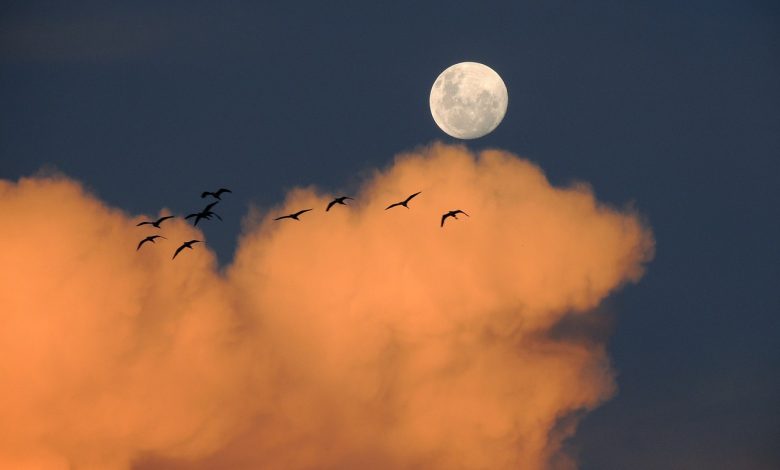Guidelines for reducing light pollution for migratory species
Syllabus: Environment and Pollution[GS Paper-3]

Context: The guidelines for reducing light pollution to protect migratory species were created in response to increasing concerns about this issue, which was first recognized at the CMS COP 13 meeting in Gandhinagar four years ago.
International Light Pollution Guidelines for migratory species:
- The guidelines discussed at the CMS COP14 in Uzbekistan highlight the importance of preserving natural darkness, which is as crucial as clean water, air, and soil.
- With artificial light pollution on the rise, these guidelines aim to minimise its negative impact on wildlife, including behavioural and physiological changes. Based on Australia’s 2020 National Light Pollution Guidelines, the recommendations focus on reducing light pollution, conducting environmental assessments, and implementing best practices in lighting design.
- Specific measures, such as avoiding lighting near wildlife habitats and managing existing light pollution, are suggested to protect migratory species and their ecosystems.
Impact of Artificial light on the Environment and Biodiversity:
- The COP document on light pollution delves into the detrimental effects of artificial light on various forms of wildlife, such as marine turtles, seabirds, migratory shorebirds, land birds, and bats.
- It explains how artificial lighting can cause disorientation in birds, leading to collisions with structures, disturbances in foraging habits, and obstacles in the fledging process for seabirds, even at distances of up to 15 km.
- The guidelines also discuss how artificial light can alter migratory paths for birds, impact roosting behaviours in migratory shorebirds, and elevate stress levels in songbirds, potentially hindering their reproductive abilities.
- Additionally, the document highlights the negative consequences of artificial lighting on other species like mammals, reptiles, and fish, citing instances such as delayed reproduction in Tammar wallabies and failed hatching of clownfish eggs under constant light.
- Beach lighting can impede marine turtle hatchlings from reaching the ocean, while bats may experience disruptions in their natural activities like roosting and foraging due to artificial light.
Key Points:
- The document highlights the success of reducing light pollution through lighting management at the Gorgon Liquefied Natural Gas Plant in Western Australia, benefiting marine turtle conservation.
- It also discusses the positive impact of managing light pollution on migratory short-tailed shearwaters on Phillip Island in Victoria, Australia.
Light Pollution:
Light pollution is defined as the introduction of artificial light into the environment, and avoidable light pollution refers to inappropriate or unnecessary use of artificial light sources at night.
Types:
- This is known as light trespass; when undesirable light gets in a person’s property, for example, light shining over a neighbour’s fence.
- Excessive nighttime radiance is the wrong legal term for overlighting. Glare happens when the brightness and the darkness in the area of one’s perception differ too much.
- Blind glare is a phenomenon where a person becomes completely blind because of staring at the sun, while disability glare denotes that the person is fixed within the beam of a car light which is oncoming or the light that is scattering in the fog and the sight capability of the person is reduced.
- You get discomfort glare, which is embarrassing and embarrassing, which can be really exhausting in the end.
- The word ‘clutter’ roughly refers to overabundant blends or grouping of lights, which may result in muddling of minds and, subsequently, accidents.
- Skyglow is an effect observed in the skies above cities where the light is reflected back to the ground because of backscattering of light coming from the directions of light reflected from the ground.
Impact:
- An abundant and uncalled-for use of lighting is waste of energy and money, leading to economic and ecological repercussions.
- The disruptions of the natural light–dark cycles caused by the artificial light during the night adversely affect the natural environment, and wildlife, for they alter the reproductive, feeding, and sleeping patterns.
- Scientific data proves that the creatures can be affected negatively by artificial light and these creatures include amphibians, birds, mammals, insects, and plants.
- Furthermore, the phenomenon of artificial night lighting has been associated with the birds’ disorientation, changing their migratory and non-migratory status behaviour.
- Moreover, another adverse effect of artificial night light is that it can interfere with human sleep cycles which are controlled by day-night cycle.
Source: DTE
UPSC Prelims Practice Question:
Q.Consider the following statement regarding light pollution:
- There are five components of light pollution: Urban sky glow, light trespass, glare, uplight and clutter.
- While Urban sky glow is the brightening of the night sky over urban inhabited areas, Glare refers to falling of light in an area where it is not intended or needed.
Which of the above statements is/are incorrect?
a. Only 1
b. Only 2
c. Both 1 and 2
c. None of these
Ans: “d”





.png)



